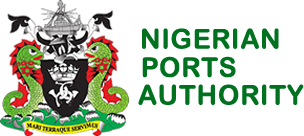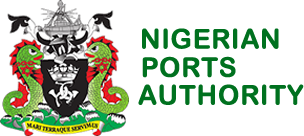IMPORT
Agencies
- Terminal Operators
- Nigeria Customs Service
- Shipping Company/Agent
- Stevedore
Procedure
For Terminal Handling (Import)
After completion of Stevedore operations, Terminal Operator receives from the Shipping Company/Agent and Stevedore the following documents;
- Cargo Discharge List
- Landing Tally Records
Storage
Terminal Operator receives from the Stevedore the following documents;
- Discharge Tally Records
- Transfer Tally Records
Terminal Operator creates Shed/Stacking plan, which precedes the actual storage/stacking of import cargo to the shed/stacking areas.
Examination
See EXAMINATIONS
Transfers
Terminal Operator makes a request to the Nigerian Customs Service (NCS) for Transfer of goods to Bonded Terminal/Warehouse based on request made by the Consignee
Delivery Refer to Terminal Operator website
Documentation
- Cargo Manifest of Vessel
- Discharge Tally Records
- Transfer Tally Records
- Terminal/Shed Staking Record/Plan
- NCS Transit Approval
Timelines Refer to Terminal Operator website
Associated Charges Refer to Terminal Operator website
EXPORT See Export Procedures
Vehicle Survey
Procedure
- After free pratique has been granted to the berthed vessel, the surveyor come along side to capture the arrival draft (Forward, Mid-ship & Aft) of the vessel at the quay side.
- Boarding of the vessel to obtain the ship working report (Time log)
- Monitoring and tallying of the containers discharge as well as containers loaded (export).
- Collation and analysis of the data collected based on 20’ and 40’ containers units.
* The analysis based on 20’ and 40’ container units are for billing purpose.
Documentation
1. Ship manifest
2. Certificate of quantity of containers on board.
3. Ships particulars.
4. Tally sheets (provide by the surveyor).
5. Time log.
Timelines
1. It depends on the quantity discharge.
2. It depends on the ships operations
Associated Charges
2.5% (All Container Sizes – Import/Export)
General Cargo Survey
Procedure
- After free pratique has been granted to the berthed vessel, the surveyor goes on board to collect the ship particulars.
- During discharging operations, the surveyors start tallying the general cargoes at the quay side by classifying the cargoes into two types (Homogeneous and Hetero generous cargos.
(A) Homogenous cargoes such as steel products bagged cargo, the dead weight by draft survey are assessed to obtain the metric tons (MTS), while weighing scale are used for Fish cargo.
(B) Heterogeneous cargo-the total volume of the cargo is access through measurement to obtain the cubic Metres (cbm) such as paper rims, flying boats, etc. - The surveyor collates and analyze the data in terms of cargo type, cubic metres (cbm) and metric tons for the purpose of billing.
Documentation
- Cargo manifest.
- Stowage plan.
- Tallying sheets (supplied by the surveyors company).
- Ship particulars
- Packing list.
- Measuring tape.
- Weighing scale (Fish cargo)
Timelines
- 2 – 3hrs (Homogeneous cargo)
- Heterogenous cargo, it depends on the productivity of the vessel
Associated Charges
2.5% (General Cargo – Import/Export)
Liquid Bulk Survey
Procedure
- After free practiq has been granted to the berthed vessel, the surveyor goes on board with other parties, DPR, PPRA, PPMC, Cargo Owner to obtain the arrival quantity using the Ullage Temperature and Interphase (UTI) device on board.
- Using the calibrated chart in the Chief Officer’s office to read up the measured length to arrive at the volume or litres of each tank of the vessel.
- Converting the volume to metric tons by using Volume Correction Factor i.e. (VCF); Volume or Litres * VCF * Density = Metric Tonnes.
- Ullage forms are prepared and counter signed by all parties.
- The arrival (measured) quantity and sailing quantity are compared for any discrepancy either positive or negative. Protest letter are issued to the vessel.
Documentation
- Arrival Ullage Forms (both surveyor and ship copies).
- Sailing Ullage Forms both (surveyor & ship copies).
- Bill of lading.
- Certificate of quantity.
- Certificate of origin.
- Ship particulars.
- Ship Manifest.
- Time log.
Timelines
- 1 – 3hrs
- It depends on the ship operations
Associated Charges
3% (Liquid Bulk – Import/Export)
Dry Bulk Survey
Procedure
- After free practiq has been granted to the berthed vessel. Joint survey to take readings of the draft, Aft, Mid and Fwd is done (Port side and star board) of the vessel is obtained by using boat alongside the vessel.
- Sounding of the ballast water to know the deductible weight (i.e. Fuel oil, Diesel oil, Fresh water.
- Using the calibrated tables; of the vessel e.g.
a. Hydrostatic table
b. Sounding table.
To ascertain the actual tonnage loaded and unloaded in the vessel after and before calculations.
Using the hydrometer to get the Dock water density to obtain the displacement correction tonnage.
Subtracting all the deductible tonnage from the net displacement correction tonnage to get the actual tonnage (weight) of the cargo loaded and unloaded.
Documentation
- Cargo manifest.
- Stowage plan.
- Bill of lading.
- Ship particulars.
- Last Port of call list.
- Crew list.
- Draft survey certificate
Timelines
2 to 3hrs
Associated Charges
3% (Dry Bulk – Import/Export)
EXPORT
Procedure
See Terminal Handling (Export)
Documentation
Refer to Terminal Operator Website
Timelines
Refer to Terminal Operator Website
Associated Charges
Refer to Terminal Operator Website




